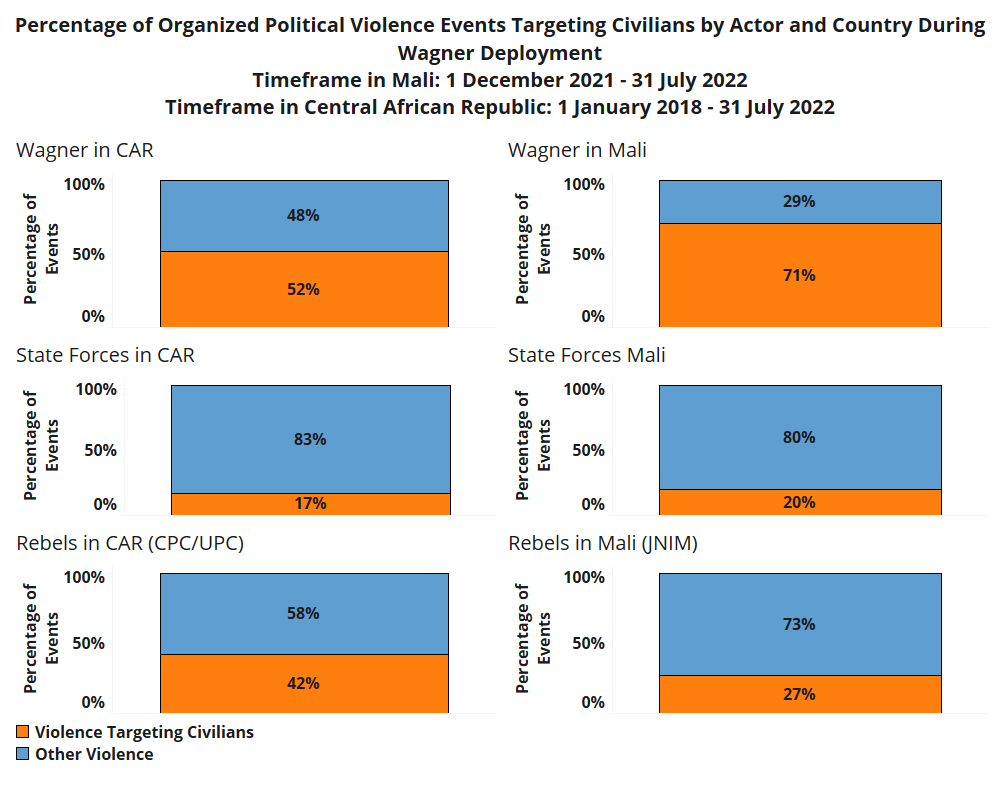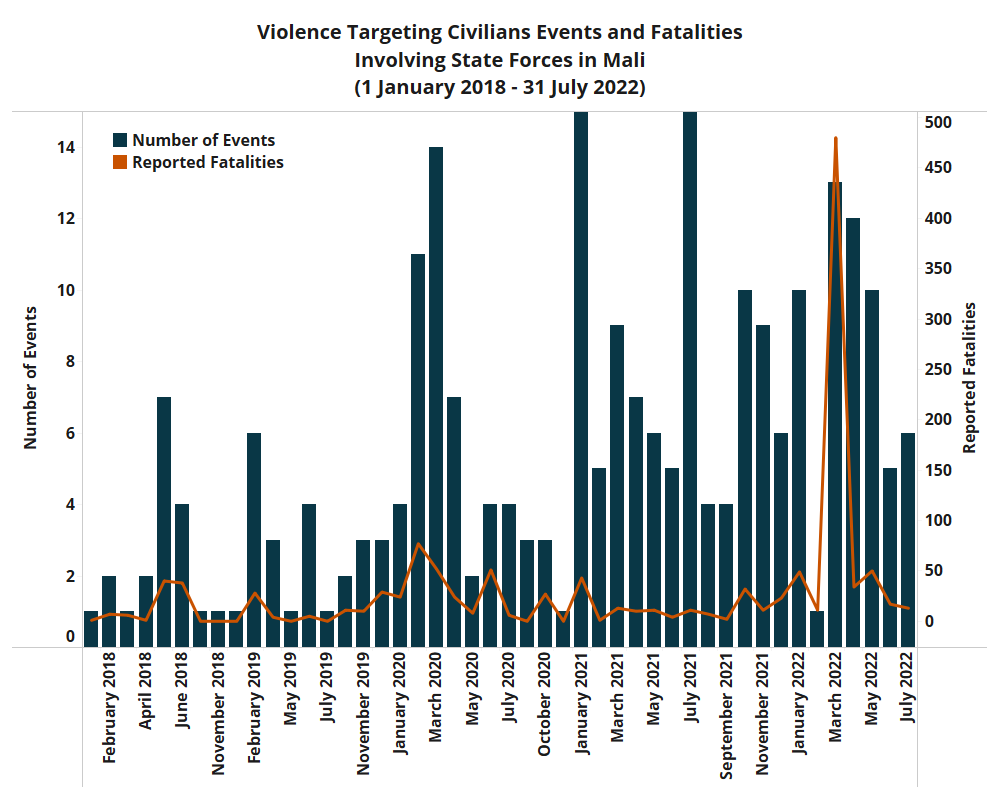Wagner Group mostly targeting civilian targets in CAR and Mali

September 1st 2022 – ACLED
A report released by ACLED on August 30th shades light on Wagner Group propency to target civilians in both the Central African Republic and Mali, the two African countries where it is currently most active. The main conclusion is that, in both countries Wagner Group engages in very high levels of civilian targeting . Civilian targeting accounts for 52% and 71% of Wagner involvement in violence in CAR and Mali, respectively. This exceeds the rate of civilian targeting perpetrated by both the regular armed forces of Mali and CAR and the major insurgent groups operating in each context.

Wagner in the Central African Republic
The Wagner Group first began operating in CAR in 2018 and their alleged involvement in human rights abuses emerged as early as 2019. In January 2019, the UN launched an investigation into alleged torture committed by Wagner forces of a man accused of belonging to an armed group. In late 2020, Wagner’s operations in CAR, earlier limited to training missions, evolved into a direct combat role.
After that, the Wagner Group became one of the dominant agents of political violence in CAR. After reclaiming most of the territory held by the rebel group CPC, the PMC started operating more and more often independently from the FACA.
Amidst the broader targeting of civilians, Muslim and ethnic Fulani civilians have drawn particular attention from the Wagner Group. This is due to reported suspicion of cooperation between these communities and rebel-affiliated groups. The attacks against civilian population include sexual violence and looting, aiming both at providing individual gain for mercenaries and at exerting control through terror.

Wagner Group in Mali
Wagner forces started its operations in Mali at the end of 2021 amid tensions between the military junta and the country traditional partner, France, leading to the withdrawal of the latter’s forces during the first semester of 2022.
Amid increased military operations, Wagner and FAMa have engaged in multiple deadly attacks targeting civilians. Wagner Group took part in violent acts against civilians in several locations in Mopti, Segou, Tombouctou, and Koulikoro regions (see map below), areas where the Al Qaeda-affiliated Jama’at Nusrat al-Islam wal-Muslimin (JNIM) is operating. ACLED records nearly 500 civilian fatalities from these attacks. The data suggests that 71% of Wagner’s engagement in violence in Mali has taken the form of violence targeting civilians.

Malian government forces (FAMA) are known to regularly attack civilians since the crisis began in 2013. However, the distinction between civilians and combatants is increasingly blurred when they cooperate with Wagner. The military junta, however, firmly denies all these facts, often dismissing them as propaganda operations against Mali. The junta actually repeatedly denied even the presence of Wagner in Mali despite all evidences, and the acknowledgement of this fact by Russian officials.
In a similar fashion as in CAR, Fulani communities are among the primary targets as they are often suspected of links with Islamist groups. An important difference however lies in the fact that the FAMA are also actors in the the majority of these exaction.
Although the deployment of Wagner in Mali is still fairly recent, it has already reshaped significantly the dynamic of violence within the country, for the worst. This brings a lot of uncertainty and pessimism for any solution to the ongoing conflict as a spiraling of violence is the most likely outcome of the mercenaries actions.



